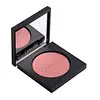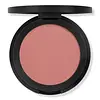What's inside
What's inside
 Key Ingredients
Key Ingredients

 Benefits
Benefits

 Concerns
Concerns

 Ingredients Side-by-side
Ingredients Side-by-side

Mica
Cosmetic ColorantCaprylic/Capric Triglyceride
MaskingSqualane
EmollientZinc Stearate
Cosmetic ColorantLauroyl Lysine
Skin ConditioningC10-18 Triglycerides
EmollientCapryloyl Glycine
CleansingUndecylenoyl Glycine
CleansingButyrospermum Parkii Butter
Skin ConditioningPrunus Amygdalus Dulcis Oil
Skin ConditioningTocopheryl Acetate
AntioxidantDiethylhexyl Syringylidenemalonate
Skin ProtectingSodium Hyaluronate
HumectantIron Oxides
CI 77891
Cosmetic ColorantCI 77742
Cosmetic ColorantCI 15850
Cosmetic ColorantCI 19140
Cosmetic ColorantMica, Caprylic/Capric Triglyceride, Squalane, Zinc Stearate, Lauroyl Lysine, C10-18 Triglycerides, Capryloyl Glycine, Undecylenoyl Glycine, Butyrospermum Parkii Butter, Prunus Amygdalus Dulcis Oil, Tocopheryl Acetate, Diethylhexyl Syringylidenemalonate, Sodium Hyaluronate, Iron Oxides, CI 77891, CI 77742, CI 15850, CI 19140
Synthetic Fluorphlogopite
Dipentaerythrityl Hexahydroxystearate
EmulsifyingDiisostearyl Malate
EmollientLauroyl Lysine
Skin ConditioningVinyl Dimethicone/Methicone Silsesquioxane Crosspolymer
Triethylhexanoin
MaskingSorbitan Sesquiisostearate
EmulsifyingHydrogen Dimethicone
Dimethicone
EmollientIsopropyl Titanium Triisostearate
EmollientTocopherol
AntioxidantSilica
AbrasivePolysilicone-2
Chlorphenesin
AntimicrobialIron Oxides
Mica
Cosmetic ColorantCI 15850
Cosmetic ColorantCI 77891
Cosmetic ColorantSynthetic Fluorphlogopite, Dipentaerythrityl Hexahydroxystearate, Diisostearyl Malate, Lauroyl Lysine, Vinyl Dimethicone/Methicone Silsesquioxane Crosspolymer, Triethylhexanoin, Sorbitan Sesquiisostearate, Hydrogen Dimethicone, Dimethicone, Isopropyl Titanium Triisostearate, Tocopherol, Silica, Polysilicone-2, Chlorphenesin, Iron Oxides, Mica, CI 15850, CI 77891
 Reviews
Reviews

Ingredients Explained
These ingredients are found in both products.
Ingredients higher up in an ingredient list are typically present in a larger amount.
Ci 15850 is the pigment color red. It is an azo dye and created synthetically.
Azo dyes need to be thoroughly purified before use. This allows them to be more stable and longer-lasting.
This ingredient is common in foundations, lipsticks, and blushes. This color is described as brown/orangey red.
It has many secondary names such as Red 6 and Red 7. According to a manufacturer, Red 6 usually contains aluminum.
Learn more about CI 15850Ci 77891 is a white pigment from Titanium dioxide. It is naturally found in minerals such as rutile and ilmenite.
It's main function is to add a white color to cosmetics. It can also be mixed with other colors to create different shades.
Ci 77891 is commonly found in sunscreens due to its ability to block UV rays.
Learn more about CI 77891This ingredient comes from a fatty acid (lauric acid) and amino acid (lysine). It is used to add a silky feel to cosmetics.
According to a manufacturer, its fatty acid base leaves a silky feeling on the skin. It also has emollient properties because of this. Emollients help soften skin by preventing water from evaporating.
Lauroyl lysine is barely soluble in water.
Learn more about Lauroyl LysineMica is a naturally occurring mineral used to add shimmer and color in cosmetics. It can also help improve the texture of a product or give it an opaque, white/silver color.
Serecite is the name for very fine but ragged grains of mica.
This ingredient is often coated with metal oxides like titanium dioxide. Trace amounts of heavy metals may be found in mica, but these metals are not harmful in our personal products.
Mica has been used since prehistoric times throughout the world. Ancient Egyptian, Indian, Greek, Roman, Aztec, and Chinese civilizations have used mica.
Learn more about MicaThis ingredient is a combination of red, black, and yellow iron oxide pigments. This combination of colors is usually found in foundation, because it results in a "skin" color.